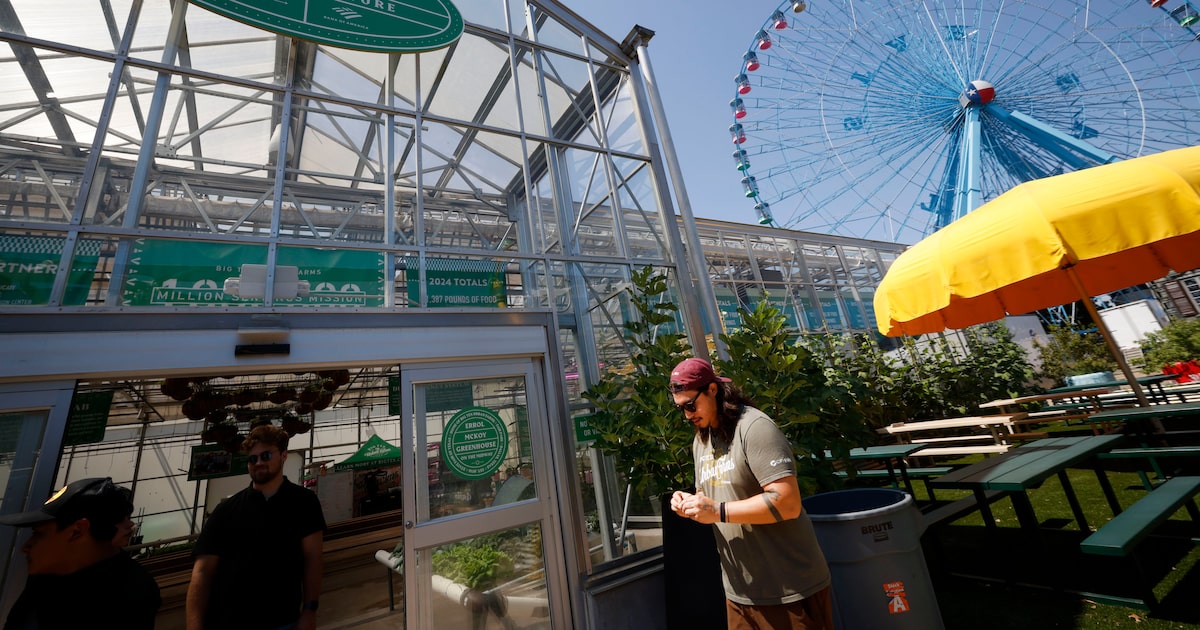Fair Park in South Dallas holds a history of segregation, exclusion and injustice. Its blighted past is continuously highlighted in efforts to rebuild the community into a prosperous neighborhood after land was taken and families displaced.
The 139-year relationship between the State Fair of Texas and the largely Black community that surrounds it – Fair Park – is, to say the least, complicated.
The Texas State Fair is an annual tradition that draws fans from near and far along with families who rely on the event to sustain their livelihoods.
Beginning this weekend, thousands of Texans will once again descend upon the South Dallas venue in an annual pursuit of whimsical thrills and deep-fried delights.
But about 65 years ago, the city made a decision to uproot hundreds of homes in Fair Park, starting in the 1960s.
News Roundups
For many with deep roots in the area, there’s still an uncertainty about how they should feel regarding the fair’s impact on their lives and the area they call home.
“A lot of people are excited that the fair is here, and what it does, but you do have a group of individuals who it puts a bad taste in their mouth because of the history,” said the Rev. Chris Simmons, pastor of Cornerstone Baptist Church.
The surrounding community acknowledges that decisions made by the city in the name of making Fair Park an attraction has hindered the majority Black neighborhood from thriving.
The State Fair, the main tenant at Fair Park, has worked to heal this relationship by giving back and reinvesting in the neighborhoods that surround the park.
The annual attraction has invested millions in scholarships to nearby schools, established a year-round farm that provides much-needed produce to local food pantries, and hired neighborhood residents for seasonal jobs in a community that has lost homes and wealth to expansion of a fair that once limited the attendance of African Americans to just one day a year.
Faye Thomas, 87, lives only a few miles from Fair Park and has worked at the fair for the last 36 years.
“When they buy their ticket, and then when they get ready to come into the gate, I take the ticket and tell them to, ‘put a smile on your face, it’s gonna be fun,’” she said.
She started working at the fair in 1989, the same year the African American Museum broke ground at Fair Park. And before that, she would take her kids when she could.
A little over a decade before Thomas started working there, she wouldn’t have been allowed into the fair.
A troubled past
Segregation policies prevented local residents from freely going to certain areas except for on segregated days.
The fair was desegregated in 1961, but some believed the boost of inclusion from the majority Black Fair Park neighborhood made it less popular.
In 1966, a consultant told the city that Fair Park wasn’t being visited due to “the poor Negroes in their shacks” and that City Hall should “eliminate the problem from sight.”
The city forcibly relocated an estimated 300 families from their homes in the 1960s and 1970s through eminent domain.
The displaced families were also paid far less than what their homes were worth. Municipal officials inside Dallas City Hall bulldozed the neighborhood to make room for a parking lot, according to The Dallas Morning News archives.
Fair Park is now 277 acres.
Plans to build a community park started under the guidance of nonprofit Fair Park First in 2020 as a way to make amends for the taken land, but have been repeatedly delayed. The city terminated its contract with the nonprofit this year after it was discovered $5.7 million in restricted donor funds were misspent on park operations.
But fundraising for the 10-acre community park has continued, with a goal to start construction in summer 2026.
Giving back
The State Fair cannot positively move forward without acknowledging the history and the community of Fair Park, State Fair of Texas President Mitchell Glieber said in a statement to The Dallas Morning News.
“As painful as that was for so many, I see that as a great opportunity for the State Fair to build programs to embrace and give back to the community in meaningful ways,” Glieber said. “We can’t undo the past, but we can impact the future.”
When Glieber became president in 2014, the fair formed a community affairs team to listen to South Dallas residents and determine what they needed from the fair. Since then, the fair annually gives out millions in scholarships, provides grants to organizations, and runs the Big Tex Urban Farms, which donates fruits and vegetables to the Fair Park area.
“The needs in this community are many, but we embrace the challenge of working beside community members and other partners to provide the resources that we can to make a difference in the lives of our neighbors,” Glieber said in the statement.
Cornerstone Community Development Corporation is one of the food kitchens that uses produce from the Big Tex Urban Farms to feed hundreds of hungry people five days a week. The food kitchen is run out of a building right next to Cornerstone Church.
“A lot of people don’t know that those things are a direct result of the fair being in the community,” Simmons said.
The farm was created in 2016 and grows produce throughout the year in a greenhouse in Fair Park. They grow collard greens, cucumbers, figs, mushrooms, tomatoes, and lettuce, and more using hydroponics, said Angel Grion, operations technician for the greenhouse.
“Every year, we’re just trying to bring something new and trying to expand,” he said.
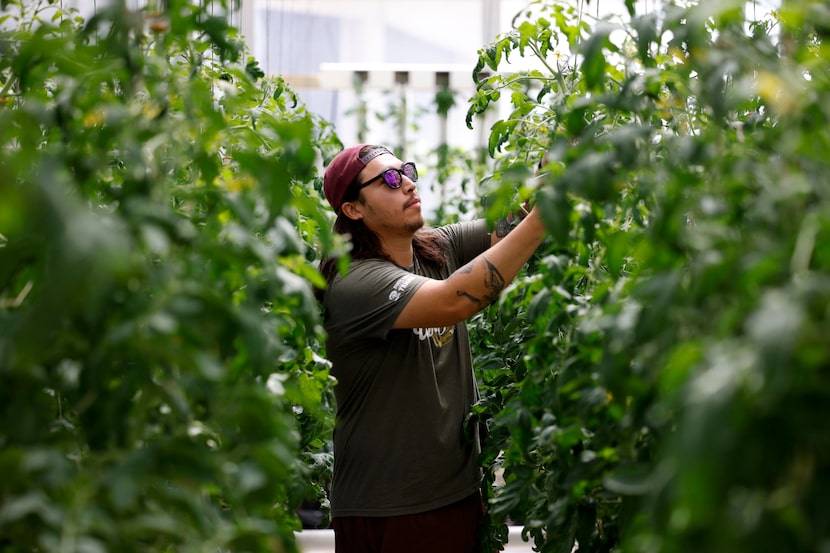
Angel Girón, greenhouse operations technician of the Big Tex Urban Farms, is seen between the tomato plants in the Errol McKoy Greenhouse on the Midway, Tuesday, Sept. 9, 2025, in Dallas.
Chitose Suzuki / Staff Photographer
Grion, who is from South Dallas, said the farm created a school program where they teach kids in the area about hydroponics. It’s also open to anyone looking to learn how to grow their own produce.
“To work somewhere where we produce greenery and food for the community and just donate, it makes me feel whole,” he said. “It’s a great place where I can just mix my love of growing, not only plants but mushrooms, along with giving.”
Once the produce leaves the greenhouse, it goes to nonprofits like Cornerstone for meals. The food kitchen is usually packed with people an hour before food is served. Many of the attendees are older, and some have disabilities or are homeless. They represent a large group who usually cannot afford to go to the fair, Simmons said.
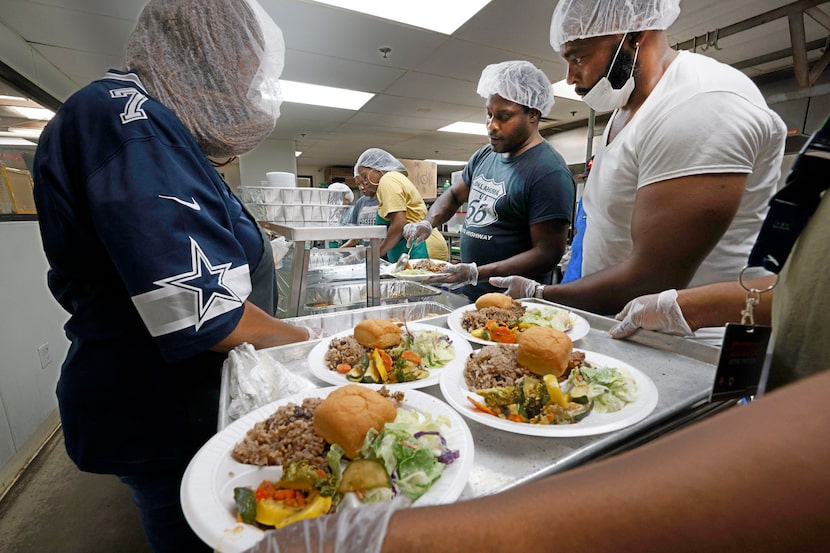
Volunteers Mae Williams, from left, Cedric Davis and Carl Adams prepare plates at the Cornerstone Community Kitchen, Tuesday, Sept. 16, 2025, in Dallas. The soup kitchen is hosted by Cornerstone Community Development Corporation, Inc, a public charity established as a non-profit organization by Cornerstone Baptist Church.
Chitose Suzuki / Staff Photographer
Normally, lunch at the Cornerstone Kitchen includes a sermon, a warm meal, dessert and maybe a few hymns, which keeps 60-year-old Michael Walton coming back.
“The food, listening to the word, the people singing, it’s an experience,” Walton said.
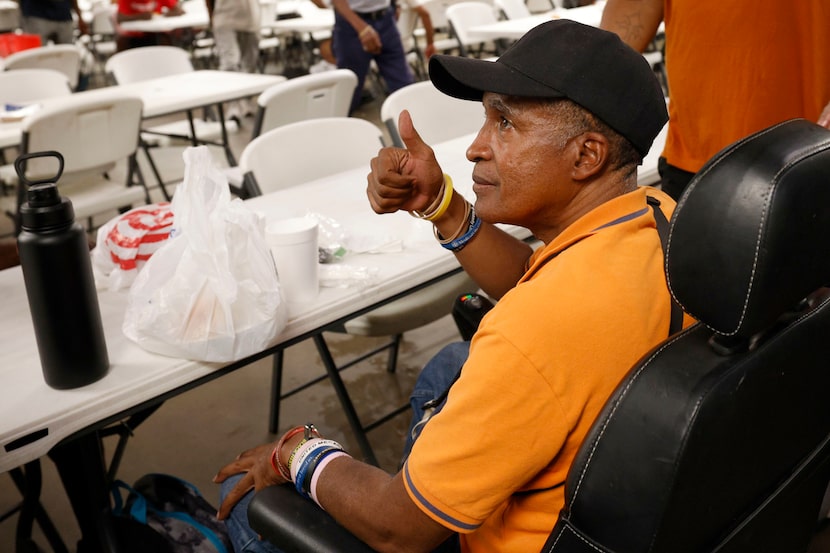
Michael Walton, a guest, thumbs up as speaking to The Dallas Morning News at the Cornerstone Community Kitchen after lunch, Tuesday, Sept. 16, 2025, in Dallas. The soup kitchen is hosted by Cornerstone Community Development Corporation, Inc, a public charity established as a non-profit organization by Cornerstone Baptist Church.
Chitose Suzuki / Staff Photographer
Once the fair closes, the food kitchen receives unused food from concession stands as part of the State Fair Cares Food Drive. Turkey legs, funnel cake mix, corny dogs and all kinds of fair food get donated.
It’s something many of the people get excited about, Queen Williams, a volunteer, said. Williams has been volunteering at the kitchen for 12 years, and said she used to rely on meals from the kitchen. Whenever they get food after the fair, she said, people come in a little more excited.
“They always come [and ask] ‘y’all got some turkey legs back there,’” she said. “The fair always donates stuff and that’s a blessing, too.”
Supporting area nonprofit groups
The fair has also provided grants to Fair Park and South Dallas nonprofits. Cornerstone received a grant for after-school programs and to run its summer day camp. The grant allowed them to feed 125 children during the summer, he said.
“They do a lot around community engagement, trying to empower and build capacity for those nonprofits in the neighborhood so that they can do more work for the good of the community,” Simmons said. “A lot of that would not happen without the state fair’s investment.”
The fair has changed throughout the years, Thomas said. It’s changed in obvious ways, like prices. But it’s also made sure to take care of its workers and its relationship with Fair Park, she said. That’s why, for the last 36 years, she’s looked forward to filling out her application to be a ticket taker and spending another season at the State Fair of Texas.
“I plan to continue as long as I can,” she said. “I’m 87 years old, so I’ll try as long as God will let me.”
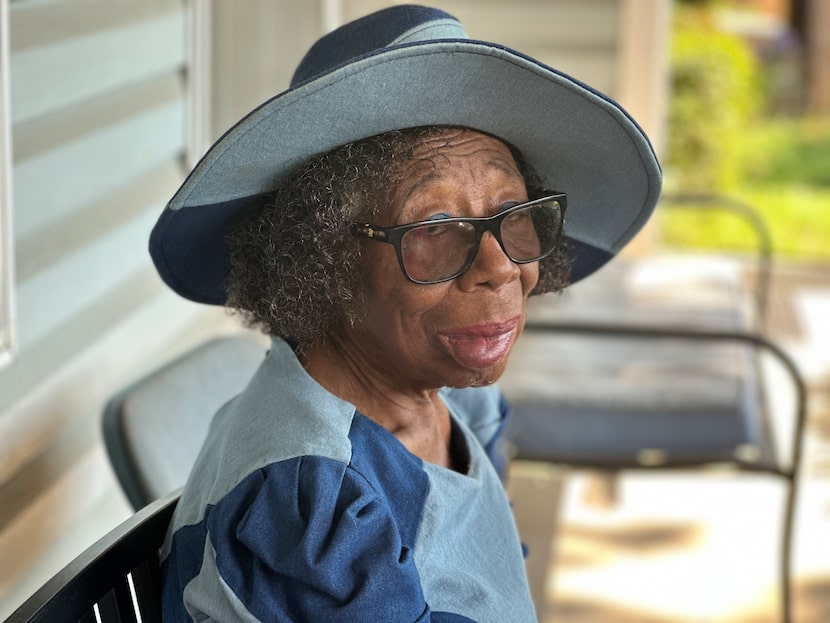
87-year-old Faye Thomas sits outside her home in South Dallas only a few miles from Fair Park on Tuesday Sept. 2, 2025.
Timia Cobb / Timia Cobb
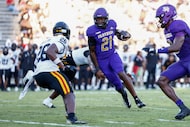 Prairie View A&M defeats Grambling State in 100th State Fair Classic at the Cotton Bowl
Prairie View A&M defeats Grambling State in 100th State Fair Classic at the Cotton Bowl
Prairie View earned its second straight victory in the State Fair Classic, and the first for head coach Tremaine Jackson.
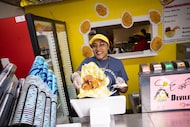 Map: Where to find state fair’s 15 Big Tex food and drink winners
Map: Where to find state fair’s 15 Big Tex food and drink winners
We can’t help with lines but we can help you make a beeline to the newest sweet and savory dishes and drinks at the 2025 State Fair of Texas.
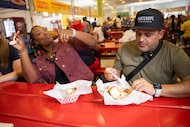 Ranked: Best and worst new State Fair of Texas foods in 2025
Ranked: Best and worst new State Fair of Texas foods in 2025
Our judges didn’t hold back in their evaluations of the 10 Big Tex Choice Awards finalists and winners, and two dishes stood out.
